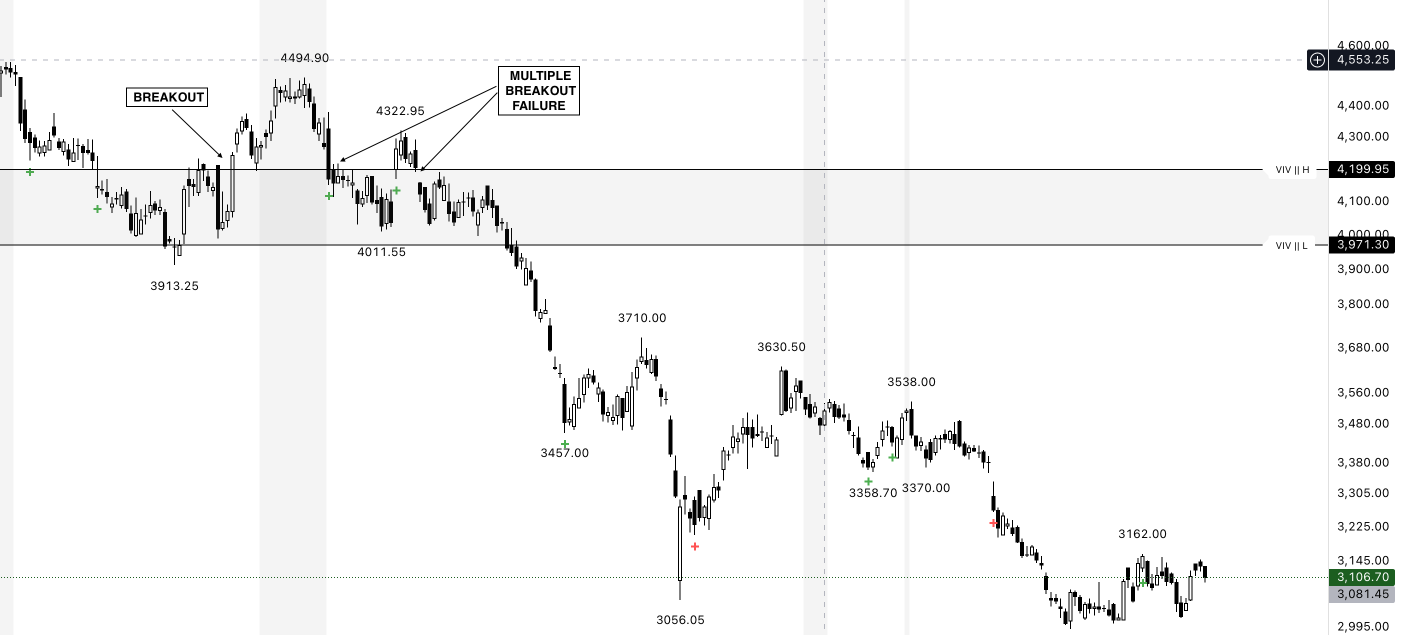There are no items in your cart
Add More
Add More
| Item Details | Price | ||
|---|---|---|---|
Breakouts are every trader’s dream. A stock surges above resistance with volume, and it feels like the beginning of a strong new trend. Yet, just as quickly as excitement builds, the move reverses, leaving traders trapped in losses. These “failed breakouts” are among the most painful experiences in trading. Understanding why they happen, the psychology behind them, and how to protect yourself can make all the difference between consistent profits and repeated frustration.
In this blog, we’ll uncover the psychology behind failed breakouts, why smart money often uses them as traps, and how the VIV Indicator can help you stay on the right side of these moves.
At the surface, a breakout looks like strength. Price clears resistance, volume spikes, and traders rush to buy. But markets are not that simple. Here’s what’s often happening beneath the surface:
Failed breakouts are not just price patterns — they’re psychological traps.
While it’s impossible to predict every failed breakout, there are signs that can help you avoid the most dangerous traps:
 This is where VIV (Very Important Volume) changes the game. Instead of chasing every breakout, VIV highlights where institutional footprints actually exist.
This is where VIV (Very Important Volume) changes the game. Instead of chasing every breakout, VIV highlights where institutional footprints actually exist.
Failed breakouts aren’t accidents — they’re part of the market’s design. Institutions know exactly how to trigger emotions, create traps, and shake traders out of positions. The difference between falling for the trap and trading successfully lies in understanding the psychology and having tools like VIV that reveal the real footprints behind price action. So next time you see a breakout forming, pause. Ask yourself: